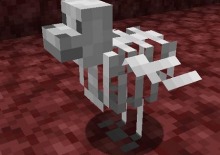Advertisement
Don’t Scream
Don’t Scream is a horror game that uses voice input as its main mechanic, placing players in a tense forest environment where silence is the key to survival. The game challenges you to avoid threats, and to physically control your reaction to fear. Any sound detected through your microphone—whether a scream, gasp, or subtle vocal reaction—instantly ends the session. The goal is to last a full in-game night, which only progresses as you walk through the environment. The longer you move, the closer you get to completing the game, but every step increases the risk of encountering unexpected terror.
Voice Sensitivity And Core Mechanics
The defining feature of Don’t Scream is its use of real-time microphone monitoring. Players must remain completely silent while playing, creating a layer of immersion that goes beyond traditional horror mechanics. The gameplay does not rely on combat or puzzle-solving but instead focuses on staying calm in unpredictable situations. Sounds from the game world—footsteps, whispers, environmental noise—build tension constantly. As the game listens for your voice, even a quiet sound can end the run, which encourages players to resist reflexes that usually come naturally during horror experiences.
Procedural Scares And Environment Design
The forest where the game takes place is not a fixed map. It contains randomized events, dynamic scare placements, and shifting pathways that ensure no two runs feel identical. Some areas are calm, while others introduce visual or audio distortions that test the player’s composure. Since time only moves forward when the player moves, standing still may seem like a solution—but remaining stationary for too long can also lead to consequences. The world is designed to feel alive and reactive, with triggers placed in ways that maximize uncertainty and tension.
Items, Hazards, And Progression
In Don’t Scream, progression involves more than just movement. Players must search the forest for batteries to keep their recording device running and for relics that offer narrative clues. Losing battery power means the end of the run, regardless of voice input. Other threats include hidden hunters that move through the environment and may ambush the player unexpectedly. There is no warning before they appear, and survival depends on quick decisions and total silence. These mechanics push players to navigate physically and mentally adapt to rising stress levels.
Key Features Commonly Found In Don’t Scream
· Microphone input determines game failure
· Time advances only when the player moves
· Batteries must be collected to maintain recording
· Dynamic scare placement changes with each run
· Hidden relics provide backstory and optional objectives
Don’t Scream offers a horror experience where the player’s own reactions become part of the challenge. Instead of relying on traditional combat or resource management, the game builds its tension through silence, pacing, and unpredictability. Every playthrough demands focus and restraint, making success a matter of strategy, and of personal control.








































































































